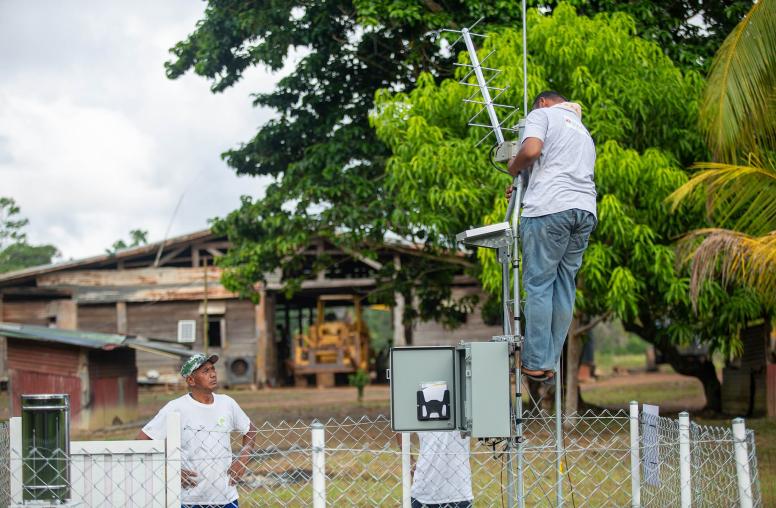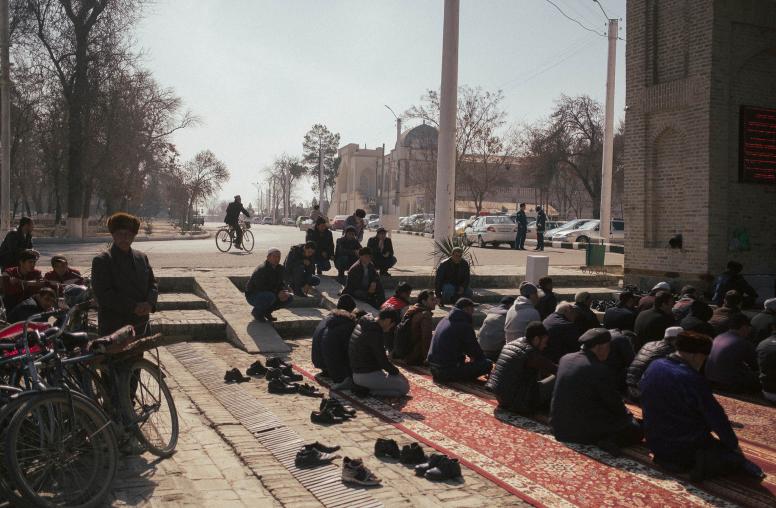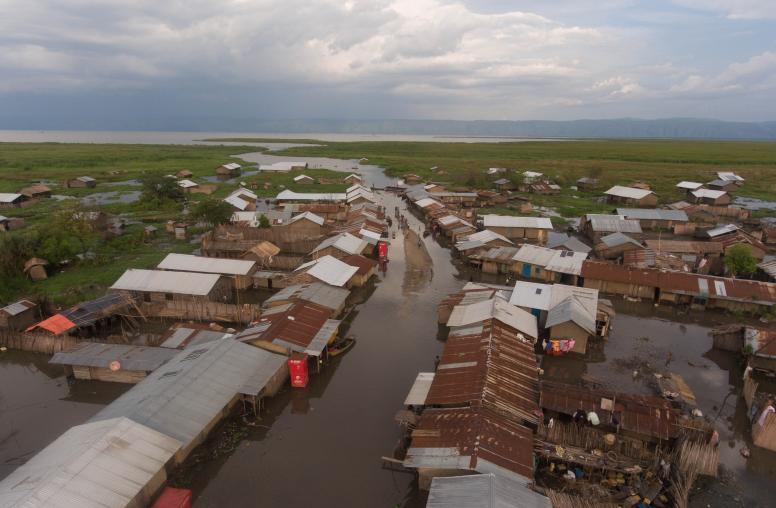Improving Accountability for Conflict-related Sexual Violence in Africa
Local practitioners who work with survivors of sexual and gender-based violence (SGBV) on a daily basis during peacetime also play a vital role in accountability for conflict-period SGBV. With appropriate training and resources, they can even contribute to the documentation and prosecution of SGBV committed as a war crime, crime against humanity, and act of genocide. This Peace Brief illustrates how new research from the Human Rights Center at the University of California, Berkeley, School of Law and direct dialogue with African experts who participated in the 2015 Missing Peace Practitioners’ Workshop conducted in partnership with The Uganda Fund in Kampala, jointly indicate priority ways to improve ground-level response to conflict-period SGBV.
Summary
- Local practitioners who focus on responses to sexual and gender-based violence (SGBV) can play a critical role in the documentation and prosecution of war crimes, crimes against humanity, and acts of genocide.
- Assisting survivors of conflict-related SGBV to report their experiences to healthcare providers and/or police can help them access essential support services. It also provides opportunities to work with groups that build legal cases against perpetrators of SGBV.
- Healthcare workers must be supported because they play a vital role in survivor support and documentation of experiences that may be used as evidence to establish SGBV as an international crime.
- Current measures for witness protection and survivor support are inadequate for the unique security challenges posed by crimes committed in the context of armed conflict.
- Where countries have domesticated the Rome Statute of the International Criminal Court, criminal laws should be harmonized to the fullest extent possible; at a minimum, police and other first responders should be trained in investigating SGBV committed as a war crime, crime against humanity, or act of genocide.
Introduction
Since the adoption of UN Security Council Resolution 1325 on Women, Peace, and Security in 2000, policymakers have paid greater attention to accountability for wartime SGBV. Indeed, some incidents of SGBV committed during armed conflict may constitute war crimes, crimes against humanity, or acts of genocide.
Traditionally, the provision of medical or psychosocial care for survivors of conflict-related SGBV or the investigation and prosecution of these crimes has been scarce. These services are often seen as the domain of international tribunals and humanitarian actors. However, local government and civil society groups play a critical role as well. It is important to understand the challenges local practitioners face in their day-to-day management of SGBV under domestic penal laws and what they need in order to also address SGBV under international criminal law.
The following are key findings and policy recommendations drawn from research conducted by the Human Rights Center at the University of California, Berkeley1 and discussions from the “Missing Peace Practitioners’ Workshop on Sexual Violence,”2 held in August 2015 in Kampala, Uganda.3 The workshop brought together over eighty healthcare providers, police officers, prosecutors, forensic analysts, judges, and civil society leaders from Kenya, Liberia, Sierra Leone, South Sudan, Uganda, and the Democratic Republic of the Congo. Experts from the International Criminal Court and groups specializing in universal jurisdiction prosecution also joined to share tips and resources related to international crimes.
Make Reporting Easier for Survivors
Improving survivors’ ability to report SGBV is essential for many reasons. Reporting helps survivors access essential medical care and psychosocial support. It also provides an opportunity for evidence collection and the contemporaneous documentation of survivors’ experiences, which can contribute to the prosecution of SGBV—including as an international crime.
Further, organizations assisting survivors during conflict can keep survivors informed of opportunities to testify in cases of international crimes long after a conflict period has ended.
Barriers to reporting SGBV are of both a social and structural nature. The stigma associated with SGBV, the fear of retaliation, community pressure to settle cases informally, and limited awareness of legal rights and trust in the police often inhibit survivors from approaching official state institutions. Long distances to police and health facilities and the cost of transportation were also cited as recurrent obstacles.
During armed conflict, these barriers are exacerbated due to insecurity and mobility challenges, shortages of police and health staff, and damaged infrastructure. Moreover, survivors may see no safe way to report crimes in areas where the police or military were implicated in the violence.
It is essential to create an enabling environment for survivors to report their experiences. Strategies include raising awareness of SGBV through the use of billboards, community radio, and theater. In addition, it is important to put into place long-term community mobilization strategies to change underlying behavioral norms.4 Relevant government actors should work with civil society organizations to improve access to reporting and support services. Potential interventions include twenty-four-hour hotlines, transportation to health facilities, or teams of community-based first responders who can accompany survivors to services. These measures should be maintained during emergency periods, as feasible.
Prioritize Witness Protection and Support
Even in peacetime, survivors of SGBV can be reluctant to assist in the investigation or prosecution of their perpetrators due to fear of the accused. The availability of safe shelter and courtroom protections is thus key to promoting survivors’ sense of security and willingness to engage the formal legal system. However, provision of shelter in the countries studied generally fell to civil society organizations whose resource constraints often limited bedspace, security, and reintegration options. In the courtroom, researchers learned of the increasing use of in camera testimony or screens to shield witnesses while they testified. Once witnesses stepped outside the courtroom, though, their safety or anonymity was difficult to ensure.
Providing shelter from SGBV related to armed conflict may pose additional challenges. First, amid acute humanitarian crisis, it can be difficult to maintain the operation of any institution, including a safehouse. Second, the potential volume of cases committed during wartime—and the increased chance that perpetrators are numerous, armed, or powerful—poses heightened capacity and security concerns for shelter providers. Third, even after a conflict has ended, survivors who suffered SGBV at the hands of armed actors may need long-term or heightened protection from powerful commanders seeking to avoid prosecution for the acts of their subordinates.
In short, the protection and support of survivors who may wish to report conflict-period SGBV poses challenges that may exceed the current capacities of traditional safe shelters or courts. Relevant government ministries should allocate resources for the protection and support of witnesses who assist in the prosecution of armed or powerful actors in coordination with experienced civil society organizations, who should not be expected to carry the burden of protection on their own.
Support and Engage the Health Sector
Healthcare providers play a dual role in responding to SGBV. In addition to providing clinical care to survivors, they also support the justice process by conducting the forensic medical examination, recording findings in an official medical report, collecting physical evidence from a survivor’s body, and testifying in court.
Information from the health sector is critical in SGBV cases. Workshop participants emphasized that the medical report was the single most important, and often the only, form of evidence in SGBV cases aside from the survivor’s testimony. However, due to reporting barriers, survivors often arrive at healthcare facilities late, after injuries have healed and evidence has been lost. Health facilities often lack basic supplies for collecting and storing evidence and few healthcare providers have the training needed to conduct a forensic examination, effectively complete a medical report, and collect evidence. Finally, providers are often reluctant to document evidence, because of either time constraints or they do not feel prepared to testify in court.
Evidence from the health sector can also contribute to the prosecution of SGBV as an international crime. For example, medical records of sexual assault, aggregated by specific locations and time periods, might indicate patterns of widespread or systematic violence.5 During conflict, healthcare providers could also document additional information that may be relevant in cases of international crimes, such as whether the perpetrator was wearing a specific uniform.6 However, in emergency periods, providers often feel overwhelmed by demand for their services, damaged infrastructure, and even greater resource limitations. They may not be able or willing to take extra steps to collect evidence for later prosecution.
Governments should allocate greater resources within health ministry budgets to address SGBV, generally. Training for healthcare providers should include all aspects of documenting SGBV, including conducting the forensic examination; completing relevant health or police forms; collecting, storing, and transferring evidence; and testifying in court. Healthcare providers should also receive training in evidentiary requirements for international crimes and adjusted protocols for evidence collection in emergencies. These protocols should be context-specific, practical, and ensure that the safety of providers and survivors is not compromised.
Finally, healthcare facilities should develop flexible plans for delivering care in emergencies, such as treatment protocols where follow-up is unlikely, procedures for quickly procuring additional supplies, and the implementation of mobile clinics.
Harmonize Laws and Coordinate Specialized Units
Workshop discussion highlighted the need for two integration processes: 1) harmonization of domestic and international criminal laws concerning SGBV, and 2) coordination and collaboration between entities focused on SGBV and entities focused on international crimes.
Often, domestic laws criminalizing SGBV do not match the provisions of the Rome Statute of the International Criminal Court or developments under customary international law. Where local laws and the Rome Statute have common offences, their definitions of those offences may differ significantly. For example, the Ugandan Penal Code defines rape as a crime against women and girls, whereas the Rome Statute definition is gender-neutral.7 Further, few national penal laws criminalize the full range of SGBV provided for in the Rome Statute, which includes rape, sexual slavery, enforced prostitution, forced pregnancy, and enforced sterilization.8
Even in countries that aspire to prosecute crimes under international law, local police will only investigate what they are trained, or required by law, to investigate. So where police and other first responders are unfamiliar with the elements and types of criminal responsibility international criminal law provides, they may fail to document information that can establish a war crime, crime against humanity, or act of genocide years later.
Therefore, harmonization of domestic and international laws regarding SGBV—or domestication of the Rome Statute—is a first step. A second step is to train local healthcare workers, police, prosecutors, judges, and human rights NGOs on the distinct elements of SGBV committed as a war crime, crime against humanity, or act of genocide, so they have at least minimal awareness in case of future emergency.
Researchers also observed the emergence of specialized healthcare, police, and prosecution units focused on SGBV. Similarly, researchers noted the recent emergence of a few other specialized units focused on the prosecution of international crimes. In times of armed conflict, these teams should combine expertise to ensure detection, investigation, and prosecution of SGBV committed as a war crime, crime against humanity, and act of genocide.9
Conclusion
In addition to international humanitarian actors and international tribunals, local government and civil society actors who handle SGBV cases have much to offer in terms of accountability for violations of international criminal law. Though myriad political and resource challenges persist in many countries, it is essential to explore ways to expand local actors’ ability to respond to SGBV in times of armed conflict and other emergencies. Active exchange among researchers, local practitioners, and policymakers is a first step toward the development of practical new strategies.
Notes
- Between 2011 and 2015, the Human Rights Center studied the challenges and strategies related to legal accountability for SGBV in five African countries affected by armed conflict: Kenya, Liberia, Sierra Leone, Uganda, and the Democratic Republic of the Congo. The report is available at: www.law.berkeley.edu/wp-content/uploads/2015/04/The-Long-Road-accountability_report_2015_final_web2.pdf.
- For more information on the workshop, please see www.law.berkeley.edu/research/human-rights-center/programs/sexual-violence-program/missing-peace-practitioners-network/.
- The 2015 workshop in Kampala was generously funded by the MacArthur Foundation and the Royal Norwegian Embassy in Uganda and was hosted by members of the Missing Peace Initiative and a local partner, Fund for War-Affected Children and Youth in Northern Uganda.
- For example, Raising Voices’ SASA! Program, a long-term community mobilization strategy, has been rigorously evaluated. See http://bmcmedicine.biomedcentral.com/articles/10.1186/s12916-014-0122-5.
- Michael P. Anastario, Monica Adhiambo Onyango, Joan Nyanyuki, et al., “Time Series Analysis of Sexual Assault Case Characteristics and the 2007–2008 Period of Post-Election Violence in Kenya,” PLoS ONE 9, no. 8 (2014): e106443.
- For additional guidance for healthcare providers, see the “International Protocol on the Documentation and Investigation of Sexual Violence in Conflict,” www.gov.uk/government/uploads/system/uploads/attachment_data/file/319054/PSVI_protocol_web.pdf.
- Uganda Penal Code (1950), para 123; International Criminal Court Elements of Crimes (2011), at 8.
- Rome Statute of the International Criminal Court, Art. 7(1)(g) and Art. 8(2)(b)(xxii).
- See Kim Thuy Seelinger, “Domestic Accountability for Sexual Violence: The Potential of Specialized Units in Kenya, Liberia, Sierra Leone and Uganda,” International Review of the Red Cross 96, no. 894 (2014): 539–64.
About this Brief
This Peace Brief presents research from the Human Rights Center at the University of California, Berkeley, School of Law and results of dialogue with African experts at the 2015 Missing Peace Practitioners’ Workshop in Kampala on how to improve ground-level response to conflict-related sexual and gender-based violence (SGBV). The Missing Peace Initiative is an initiative of the U.S. Institute of Peace, the Human Rights Center at the University of California, Berkeley, the Peace Research Institute of Oslo, and Women in International Security. Ketty Anyeko is a Gender and Transitional Justice Expert for The Fund for War-Affected Children and Youth in Northern Uganda. Kim Thuy Seelinger is the Director and Julie Freccero is the Associate Director of the Sexual Violence Program at the Human Rights Center, University of California, Berkeley, School of Law.



